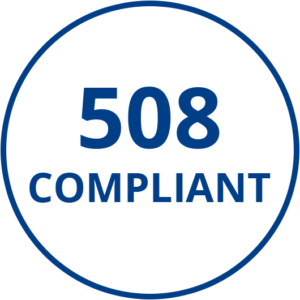 People with disabilities make up almost 20% of the United States population and it’s likely that many teachers have taught a student with a disability. Teachers have used online video and audio tools to engage their students and it helps heighten their educational experience.
People with disabilities make up almost 20% of the United States population and it’s likely that many teachers have taught a student with a disability. Teachers have used online video and audio tools to engage their students and it helps heighten their educational experience.
If you’re creating online videos, you may need to double-check to see if you’re complying with federal laws. New Rules went into effect in January 2018 and these rules now require online videos and audio files to have closed captioning or transcriptions.
What does this mean?
For cannabis industry training you’ll need to take that extra step to ensure accurate closed captioning on your videos. If audio files are a part of your learning toolkit, you’re required to add transcriptions.
This is required for all new and existing content. A good ‘rule of thumb‘ is to incorporate closed captioning or transcriptions in your creation process moving forward. As for older videos, there are easy ways to incorporate captions. It’s a tedious process…
Who does this affect?
 Almost everyone. It’s outlined under Title II and III of the Americans with Disabilities Act and Section 504 and 508 of the Rehabilitation Act which includes just about every public entity including government offices, hotels, religious organizations, and schools.
Almost everyone. It’s outlined under Title II and III of the Americans with Disabilities Act and Section 504 and 508 of the Rehabilitation Act which includes just about every public entity including government offices, hotels, religious organizations, and schools.
Under these Acts, the rules apply to all aspects of learning including online information and programming services. Videos that are accessible and follow federal rules are called 508-compliant.
How do I know if I am meeting accessibility requirements?
For video content to be accessible, the dispensary employee watching it must fully understand what is happening in both the visual and audio portions of the video. If they don’t understand the message in either the video or audio sections, the video is not accessible.
How do I make my videos accessible?
 There are three (3) elements to video accessibility:
There are three (3) elements to video accessibility:
- Captions: The audio portions must have text that follows the visual aspects of your video. This gives access to people who are either hearing impaired or deaf.
- Audio Transcriptions: These are descriptions of the video’s visual elements giving people who are blind or visually impaired access to the information.
- 508-Compliant Video Player: Gives a person the ability to use keyboard navigation or an assistive device so they can navigate the video player.
Cannabis Training with Green CulturED
Green CulturED’s eLearning solutions are complex systems with many parts. Its code is always evolving. Modules can be enabled and disabled. The interface can be heavily customized using themes and thousands of settings.
Accessibility is NOT a state, it is a process of continuous improvement in response to our partners and the wider technical environment.
Let us know what you think.




Responses